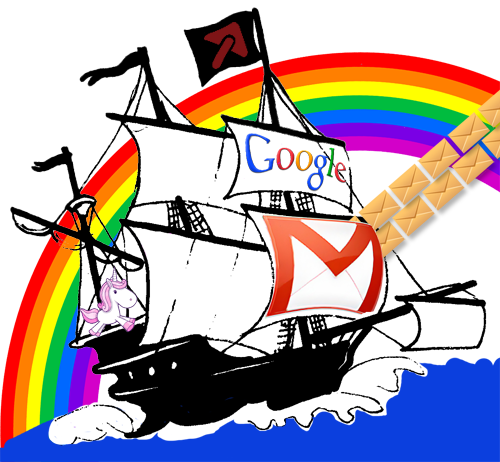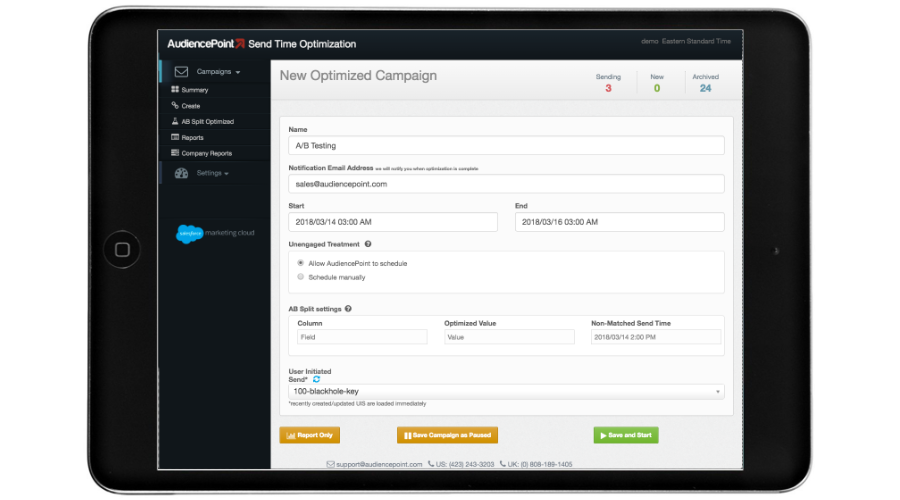AudiencePoint is thrilled to announce our new integration with Klaviyo! AudiencePoint is looking for partners to pilot our...
Introduction to the Email Marketing Customer Journey
In today’s digital landscape, the customer journey has become an essential framework for understanding and optimizing an email marketing strategy. But what exactly is the customer journey in marketing? The customer journey refers to the series of interactions a consumer has with a brand, from the initial awareness phase to the post-purchase experience and beyond. This journey is not linear; it involves multiple touchpoints across different channels.
Definition of Customer Journey
The customer journey is a map that outlines the various phases and touchpoints a customer experiences with your brand. These phases typically include Awareness, Consideration, Decision, Retention, and Advocacy. Understanding this journey allows marketers to craft strategic emails that resonate at each stage.
Importance of Understanding the Customer Journey
Understanding the customer journey is critical for creating effective email marketing campaigns that drive engagement and conversions. Knowing where a customer is in their journey helps to personalize content, refine segmentation, and deliver timely, relevant messages. This knowledge not only improves the customer experience but also enhances the overall effectiveness of your email marketing initiatives.
Role of Email Marketing in the Customer Journey
Email marketing plays a pivotal role at every stage of the customer journey. Whether it’s a welcome email to new subscribers during the Awareness phase, a product recommendation during the Consideration phase, or a loyalty reward email during the Retention phase, strategically crafted emails can guide customers smoothly through their journey. Not only does this increase the likelihood of conversion, but it also fosters long-term customer relationships and brand loyalty.
What Is the Email Journey Strategy?
An email journey strategy is a carefully planned process designed to guide customers through each sales funnel stage using targeted email communications. It involves mapping out a series of emails that address the needs and interests of your audience at different stages, helping to nurture leads and convert them into loyal customers. A well-executed strategy can significantly enhance your email marketing effectiveness, ensuring that the right message reaches the right person at the right time.
Overview of an Email Journey Strategy
An email journey strategy starts with a comprehensive understanding of your audience and their buying behaviors. It’s about creating a sequence of emails that align with the customer’s path from awareness to advocacy. This strategic planning includes defining goals for each email, creating content that resonates with your audience, and setting up triggers based on user actions or lifecycle stages.
The process often begins with welcome emails introducing new subscribers to your brand, followed by educational content that builds interest and trust. As the journey progresses, emails become more targeted, addressing specific needs or objections to encourage purchase decisions. Post-purchase, the focus shifts to nurturing relationships and encouraging repeat purchases or referrals.
Components of a Successful Email Journey Strategy
A successful email journey strategy consists of several key components:
- Segmentation: Dividing your email list into segments based on demographics, behavior, or purchase history allows for more personalized and relevant messaging.
- Content Development: Crafting compelling email content that provides value at each stage of the customer journey, whether educational, promotional, or simply engaging.
- Automation Tools: Utilizing email marketing platforms to automate the sending of emails based on triggers like user actions, purchase behavior, or time intervals.
- Analytics and Testing: Track performance metrics regularly and conduct A/B testing to refine and optimize your strategy continually for better results.
Strategies for Different Stages of the Funnel
Each stage of the sales funnel requires a tailored approach:
- Top of the Funnel (Awareness): Focus on broad, informative content that captures interest—such as blog posts, infographics, or industry news.
- Middle of the Funnel (Consideration): Provide more detailed, solution-oriented content, such as case studies, whitepapers, or comparison guides, to help prospects evaluate their options.
- Bottom of the Funnel (Conversion): Send targeted, personalized offers and incentives to nudge prospects toward making a purchase.
- Post-Purchase (Retention & Advocacy): Engage customers with loyalty programs, special offers, and personalized follow-ups to encourage repeat business and referral.
What Are the 5 Steps of Email Marketing?
Step 1: Awareness – Getting Noticed
The first step in any successful email marketing strategy is to build awareness. Awareness is where you introduce your brand to potential customers. Utilizing techniques like lead magnets, social media promotion, and SEO-friendly blog posts can drive new sign-ups to your email list. The crucial aim at this stage is to get noticed and to make a positive first impression.
Step 2: Consideration – Building Interest
Once you’ve captured your audience’s attention, the next step is a consideration. During this stage, the goal is to cultivate interest in your products or services. Use targeted emails with valuable content, such as how-to guides, case studies, or whitepapers. The key here is to show potential customers how your solution can meet their needs or solve their problems.
Step 3: Conversion – Encouraging Action
Conversion is the most critical stage in the email marketing journey. Here, the objective is to motivate your audience to take a specific action, such as purchasing or signing up for a webinar. Tactics like personalized recommendations, limited-time offers, and well-crafted CTAs (Calls to Action) can be highly effective. At this stage, your emails should be clear, concise, and focused on driving conversions.
Step 4: Loyalty – Fostering Repeat Engagements
After conversion, the journey doesn’t end. Building customer loyalty is essential for long-term success. Regularly engage your customers with newsletters, special offers, and early access to new products. This helps to keep your brand at the top of your mind and encourages repeat business. Loyalty programs and personalized follow-up emails can be very effective at this stage.
Step 5: Advocacy – Creating Brand Ambassadors
The final step involves turning loyal customers into brand advocates. These are customers who are so satisfied with your products or services that they willingly promote your brand to others. Encourage advocacy through referral programs, incentives for reviews, and sharing user-generated content. The power of word-of-mouth marketing, particularly through email, can significantly enhance your brand’s reach and credibility.
Where Does Email Marketing Stand in the Customer Value Journey?
The customer value journey delineates a roadmap that a potential customer follows from initial awareness to becoming a loyal advocate of your brand. Email marketing is pivotal in influencing each stage of this journey, ensuring consistent engagement and fostering trust.
Role and Impact at Each Stage of the Customer Value Journey
At each stage of the customer value journey, email marketing can be tailored to meet specific needs:
- Awareness: In the awareness stage, emails introduce potential customers to your brand. Strategically crafted welcome emails and informative content can capture attention and lay the groundwork for future interactions.
- Engagement: As customers show interest, emails should shift to providing value through educational content, product highlights, and personalized recommendations. This engagement helps nurture a deeper connection with the audience.
- Conversion: During conversion, email marketing should focus on detailed product information, testimonials, and special offers that drive the decision-making process. Abandoned cart emails are particularly effective in this stage.
- Loyalty: To foster loyalty, regular communication through exclusive offers, updates, and personalized content is critical. Loyalty programs promoted via email can also encourage repeat business.
- Advocacy: Finally, in the advocacy stage, satisfied customers can be encouraged to share their positive experiences. Emails prompting reviews, referrals, and participation in community forums can harness the power of word-of-mouth marketing.
Integration with Other Marketing Channels
Email marketing must be integrated seamlessly with other marketing channels to be truly effective in the customer value journey. Whether through social media, content marketing, or paid ads, each channel should support and reinforce the messages conveyed through email, creating a cohesive and amplified impact.
Measurement and Optimization of Email Marketing in the Value Journey
Consistent measurement and analysis are crucial to understanding the effectiveness of your email campaigns. Key metrics such as open rates, click-through rates, conversion rates, and customer feedback provide valuable insights. Optimization efforts, including A/B testing and refinement of email strategies, ensure that your email marketing remains relevant and effective at each stage of the journey.
Best Practices for Email Marketing in the Customer Journey
Segmentation and Personalization of Emails
A paramount aspect of effective email marketing is the segmentation of your subscriber list. By doing so, you can target different segments with tailored content, significantly enhancing relevance and engagement. Segmentation can be based on various criteria, including demographics, behavior, and purchase history. When combined with personalization, where emails address subscribers by name or recommend products based on previous purchases, the results can be substantially more impactful.
Automation and Workflow Setup
Automation is a game-changer in email marketing. By setting up automated workflows, you can ensure that emails are sent at optimal times, enhancing the efficiency of your campaigns. Workflows can include a welcome series for new subscribers, abandoned cart reminders, or re-engagement campaigns for inactive users. Automating these processes saves time and ensures a consistent communication strategy without manual intervention.
A/B Testing and Analytics
Continuous improvement is critical in the dynamic realm of email marketing. A/B testing allows you to experiment with different elements of your emails—subject lines, content, call-to-action buttons—and identify what resonates best with your audience. Analytics provide invaluable insights into email performance, helping to refine strategies and boost engagement. You can gather data-driven insights that inform your email marketing tactics by routinely reviewing metrics such as open rates, click-through rates, and conversion rates.
Compliance and Privacy Considerations
Adherence to privacy regulations like GDPR and CAN-SPAM is non-negotiable. Compliance not only protects your business legally but also builds trust with your subscribers. Ensure you have explicit consent to send emails, provide easy options for unsubscribing, and be transparent about handling personal data. Keeping your practices above board ensures long-term success and credibility in your email marketing efforts.
Enhance your email marketing strategy with AudiencePoint’s advanced platform, designed to optimize every stage of the customer journey. Our cutting-edge tools offer unparalleled insights into your subscribers’ inbox habits, enabling you to refine segmentation, automate with precision, and comply with regulations effortlessly, ultimately boosting your revenue potential. Contact Audience Point today.





